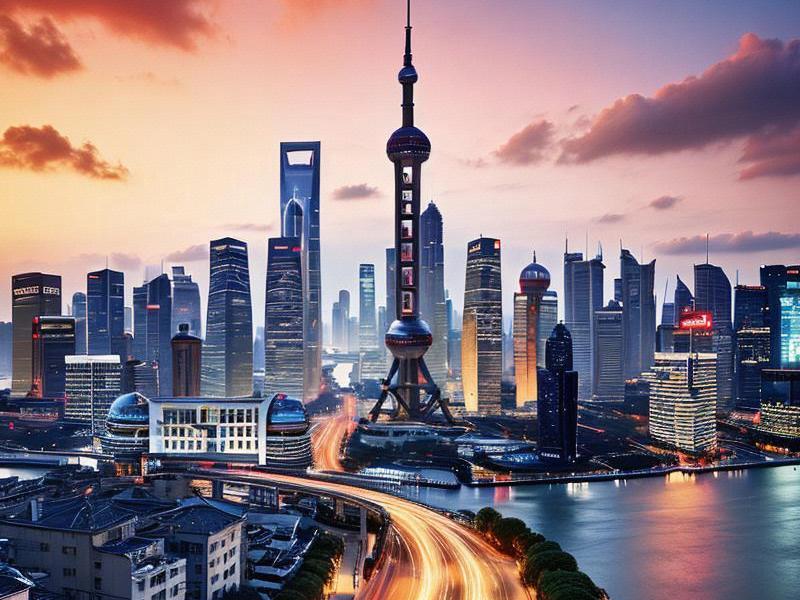Shanghai and Its Surrounding Areas: A Comprehensive Overview
⏱ 2025-04-27 21:42 🔖 上海娱乐千花坊联盟
📢0℃

Shanghai, the largest city in China, stands as a beacon of modernity and progress. With its skyline dominated by iconic skyscrapers like the Oriental Pearl Tower and the Shanghai Tower, the city is a testament to China's rapid urbanization and economic transformation. However, Shanghai's story is not just about its own growth; it is deeply intertwined with the development of its surrounding areas.
The surrounding areas of Shanghai, including cities like Suzhou, Hangzhou, Ningbo, and Wuxi, are collectively known as the Yangtze River Delta region. This region is one of the most economically dynamic and culturally rich areas in China. Together with Shanghai, they form a powerful economic bloc that drives the national economy.
Suzhou, often referred to as the "Venice of the East," is renowned for its classical gardens, canals, and silk production. The city has successfully balanced its rich cultural heritage with modern urban development. The Suzhou Industrial Park, established in 1994 as a joint venture between China and Singapore, is a prime example of Suzhou's commitment to economic innovation and international cooperation.
Hangzhou, the capital of Zhejiang Province, is famous for its picturesque West Lake and the historic town of Hangzhou. The city has leveraged its cultural assets to attract tourists and investors alike. In recent years, Hangzhou has emerged as a major hub for the digital economy, particularly in e-commerce. The city is home to Alibaba Group, one of the world's largest technology companies, which has significantly contributed to the region's economic growth.
爱上海论坛
Ningbo, located on the eastern coast of China, is a major port city and a key player in international trade. The Ningbo-Zhoushan Port, the world's busiest container port, serves as a vital link between China and the global market. Ningbo has also made significant strides in high-tech industries, including robotics and information technology, positioning itself as a leader in innovation.
Wuxi, known for its beautiful Taihu Lake and the famous Wuxi Taiji Factory, is another important city in the Yangtze River Delta. The city has a strong industrial base, particularly in electronics, machinery, and pharmaceuticals. Wuxi has also been actively promoting sustainable development and environmental protection, ensuring that economic growth does not come at the expense of ecological balance.
The integration of Shanghai with its surrounding areas is a complex and dynamic process. The development of the Shanghai Free-Trade Zone (FTZ) has played a crucial role in this integration. Established in 2013, the FTZ is a pilot zone for economic reform and innovation, aimed at exploring new models for trade, investment, and financial liberalization. The FTZ has not only enhanced Shanghai's competitiveness but also provided opportunities for its neighboring cities to integrate into the global economy.
新上海龙凤419会所
The integration of transportation infrastructure is another key aspect of the regional development. The Shanghai-Nanjing High-Speed Railway, one of the busiest high-speed rail lines in China, connects Shanghai with Nanjing and other major cities in the Yangtze River Delta. This seamless transportation network facilitates the movement of people and goods, promoting economic cooperation and cultural exchange.
Cultural integration is equally important in shaping the identity of the Shanghai and its surrounding areas. The region is home to a diverse population, with a rich tapestry of traditions, languages, and cuisines. Festivals such as the Shanghai International Film Festival, the Suzhou Kunqu Opera Festival, and the Hangzhou Tea Culture Festival celebrate the unique cultural heritage of each city while fostering a sense of regional unity.
The economic growth of the Yangtze River Delta region is a remarkable story of collaboration and innovation. The region's GDP accounts for a significant portion of China's total GDP, making it a powerhouse of economic activity. The integration of industries, the development of high-tech sectors, and the emphasis on sustainable development have all contributed to the region's success.
上海龙凤千花1314
However, the rapid development of the region also presents challenges. Issues such as environmental pollution, urban sprawl, and social inequality need to be addressed to ensure sustainable growth. The Chinese government has implemented various policies and initiatives to tackle these challenges, including the promotion of green development, the improvement of public services, and the enhancement of social welfare.
In conclusion, Shanghai and its surrounding areas are a microcosm of China's urbanization and economic transformation. The region's unique blend of modernity and tradition, innovation and sustainability, and collaboration and integration makes it a model for other regions in China and around the world. As Shanghai continues to shine as a global financial hub, its surrounding areas play a crucial role in shaping the future of the Yangtze River Delta region and China as a whole.
The story of Shanghai and its surrounding areas is not just about economic growth; it is about the people who live and work in these cities, their aspirations, and their contributions to the region's development. It is a story of resilience, innovation, and unity, a testament to the potential of urbanization and regional integration in driving progress and prosperity.
In the years to come, the Shanghai and its surrounding areas will continue to evolve, facing new challenges and opportunities. The region's ability to adapt and innovate will determine its place in the global arena. As we look ahead, it is clear that the story of Shanghai and its surrounding areas is far from over. It is a story that will continue to inspire and captivate, a story of a region that is not just shaping its own destiny but also contributing to the future of China and the world.
Shanghai's Digital Muse: How Tech-Savvy Women are Redefining Femininity in the Megacity【霓虹记忆】上海娱乐会所30年浮沉录Shanghai 5200: Quantum Symbiosis Nexus and the Photonic Civilization Matrix【霓虹与素笺】上海女性审美变迁录(1920-2025)Shanghai's Journey to Becoming a Global Innovation Hub【上海女儿】从百乐门到BFC:三代沪上名媛的衣香鬓影录Shanghai 5300: Quantum Symbiosis Nexus and the Photonic Civilization Matrix【虹桥纪事】上海西大门的百年流量密码Shanghai 5350: Quantum Leisure Singularity and the Galactic Nightlife Matrix【梧桐密码】——解码上海街区的十二层时空褶皱

